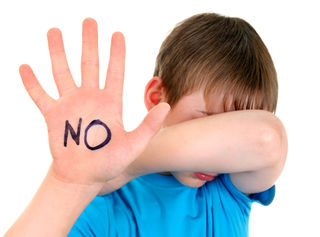Anger
What’s Normal?
Aggressive Behavior Among Young Children and When to Seek Evaluation
Posted June 27, 2017

Young boys and girls are both naturally aggressive from around 18 months to 3 years. Children of these ages are beginning to learn social moirés and developing their interpersonal skills. If child hits, pushes, bites or bullies during these ages, it may simply be part of the natural maturation and boundary testing of growing up. If they are taught or guided on pro-social ways to get their needs met, they will use those skills through Elementary school and beyond.
If a child continues to display violent behavior past the age of 5 or as they enter first grade, it is likely he/she needs developmental skill building. In other words, a measurement of their developmental level (not always the same as age) of skills such as communication, interpersonal, task, self-management, anger management, problem solving, and relaxation against age norms. If a child that bullies stops this behavior with redirection, teaching and reinforcement, then it likely was a temporary problem. However, if the behavior continues for more than 4 – 6 months after appropriate direction is given, it may be a more deep-seated problem and need more precise and intensive skill building. An evaluation by a psychologist to determine the level of pro-social skills, family problems, diagnosis and risk for future violence is recommended. Family therapy may be needed to help parents learn parenting and behavioral management skills. Parents and caregivers must teach and reinforce the skills in a developmentally appropriate sequence.
Risk factors to be concerned about past age 6 include:
- Hits, punches, scratches, pushes or bullies other children
- Is suspended or expelled from school
- Friends get into trouble often
- Anger management problems
- Ineffective parenting techniques used by caregivers (too harsh, too lax, or inconsistent)
- Lacks empathy and/or remorse
This assumes that the child has not been abused or neglected by caregivers or others. If parents or caregivers do not teach them alternatives to aggression to get their needs met, they will continue to use aggression to get what they want or need. Setting limits and reinforcement of positive and pro-social behaviors in a healthy, nurturing environment will help them learn these skills. If no one ever teaches them pro-social skills and shows them empathy, aggression may last a lifetime.
Attachment is the “heart to heart” emotional bond between a youth and his/her caregiver. It causes parents and caregivers to automatically nurture and meet the needs of the child or teen with a caring experience and basics such as food, shelter, protection, and comfort. Attachment to a caregiver is the basis for the development of empathy. An empathetic child is more likely to help others and less likely to harm others. Attachment problems may underlie continued aggression past age 5 and beyond.
Abuse, neglect, and family domestic violence can interfere with the bonding processes between youth and caregivers. The tendency to harm and “not help or comfort” another person can lead to antisocial behaviors and attitudes. An aggressive youth may be experiencing violence at home, school or the community. If in later developmental stages, youth are abused, neglected, exposed to family or community violence, or bullied by peers they may remain aggressive well into the future, perhaps a lifetime. Careful inquiry is needed to stop any violence that the youth may be experiencing.

For instance, a child that steals may not be getting his basic needs met at home. He decides he must take care of himself. Or he may have been exposed to family violence and does not trust adults to help him and not harm him. He will often not know how to ask for what he needs. Five things must happen for a child to be able to ask for what he needs:
His basic needs must be met adequately.
He must have trust that if he asks, his needs will be met.
He needs to know how to ask for what he wants.
He must be able to accept “no” if the caregiver is setting appropriate limits.
He also needs to be able to wait for what he wants or needs (delayed gratification should be well developed by age 4).
Children that display violent behaviors or steal after age 5 or entering first grade should be evaluated by a psychologist for pro-social development, family issues and a diagnosis. Early intervention has high levels of success, so parents/care-givers are encouraged to act as these issues emerge.


